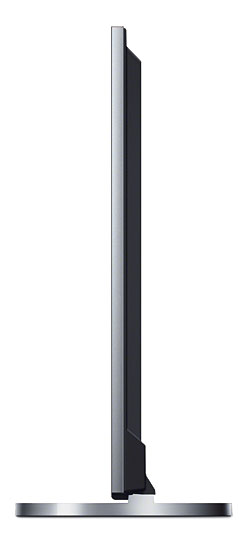Sony KDL-65W850A 3D HDTV Page 2
Animation has its limitations as a source for judging the naturalness of an image, but it’s great for evaluating resolution. And no animation studio puts more detail in its films than Pixar. Monsters University is a much better film than it’s been given credit for, but regardless of where it falls in the Pixar Hall of Fame, it’s a standout for the textures and detail given to its characters and backgrounds. The Sony appears to get it all, and it’s hard to imagine this movie looking better than it does on this set. The color is extremely rich and vivid as well—even if we’re talking about computer-generated color.
 Samsara is a live-action documentary styled in the same fashion as Baraka and produced by the same team of filmmakers. The Blu-ray is clearly reference quality (the film was shot in 70mm), with scenes that segue from jaw-droppingly gorgeous (the interiors of Versailles and St. Peter’s, Tibetan sand art) to strange (the trio of dancers that open the film), to downright repulsive (you might never want to eat chicken again). Through it all, however, the Sony doesn’t miss a step in delivering not only the film’s bizarreness, but also all of its ravishing color and detail.
Samsara is a live-action documentary styled in the same fashion as Baraka and produced by the same team of filmmakers. The Blu-ray is clearly reference quality (the film was shot in 70mm), with scenes that segue from jaw-droppingly gorgeous (the interiors of Versailles and St. Peter’s, Tibetan sand art) to strange (the trio of dancers that open the film), to downright repulsive (you might never want to eat chicken again). Through it all, however, the Sony doesn’t miss a step in delivering not only the film’s bizarreness, but also all of its ravishing color and detail.
The Sony’s black level and shadow detail are impressive as well. I wasn’t at all let down by its handling of Harry Potter and the Deathly Hallows: Part 2—a film that’s nearly one long black-level killer test from beginning to end. It did send me to the Sony’s menu to make some minor changes (no more than a single step to Brightness and Gamma), but I arrived at a very satisfying result. And if that result was never quite as flawless as I see from the best plasma sets, it was close. Sony (and other manufacturers as well) has made real strides in improving the LED edge-lit local dimming on their LCD designs, though full-array LED backlighting with local dimming remains the gold standard for producing compelling LCD blacks.
The one remaining serious weakness in most LCD designs is off-center viewing, and that’s the case here. Move more than 15 degrees to the side on this Sony, and the image starts to wash out and lose contrast. At a viewing position more than 25 degrees to the side (or significantly above or below the screen), no videophile will be satisfied with the picture for long—though non-critical, casual viewers probably won’t notice. If you’re reading this, however, you may be in the purist camp and will want to sit as close to the center of the screen as possible.
3D, if You Must
It’s been said that 3D is losing its market mojo. That may be true, but if you must go 3D, the Sony is definitely above average. As measured through its active glasses, its post-calibration brightness of just under 12 foot-lamberts (Standard Picture Mode, with the 3D Glasses Brightness set to High), it’s pleasingly bright—brighter than many 3D sets but not the brightest we’ve seen. (The latter include other Sonys we’ve recently tested, particularly their Ultra HD sets that employ passive glasses.) I did see some ghosting, but mainly on white titles and subtitles. Post-calibration, there was also some bluishness visible in black areas without the 3D glasses, but the glasses effectively filtered this out.
I also noticed some motion judder in 3D, particularly in chapter 3 of Captain America as the camera pans across the Alps near Red Skull’s lair. There was also some flicker on the stationary opening menu of Pacific Rim. Turning on Motionflow and selecting its Standard setting eliminated both of these issues. They were rare enough that I preferred to do without the look of Motionflow. But if the judder and flicker bother you in 3D, Motionflow is the best available solution.
Apart from this, 3D on the Sony was fun and more than satisfying for the occasional 3D night. If you can’t get enough 3D, however, and must have it at its absolute best, you may need to pony up for a 4K set that employs passive glasses. The XBR-65X900A, in particular, produced the best 3D I’ve ever seen.
Conclusions
With all the hubbub about 4K, the hullabaloo following new technologies such as OLED, and the fading but nonetheless relevant following for 3D, it’s easy to forget that the basics of television performance still count. The Sony isn’t a flawless set; its off-axis performance, residual motion blur, and blacks that, while good, are still a bit less than cave-like, remind us that the road to HDTV perfection may not be permanently paved with LCDs. But when you plop down into your favorite seat, dial in your favorite game, or pop in a quality Blu-ray movie to watch on the KDL-65W850A, none of that will matter. You’ll simply get lost in the show.













































